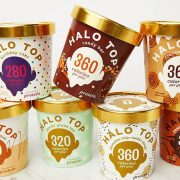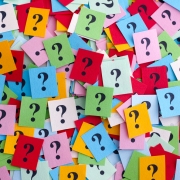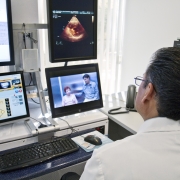In 1943, in a stunning example of poetic and legal justice, the United States Supreme Court vacated all of Guglielmo Marconi‘s patents for radio and awarded them to Nikola Tesla, who had died six months earlier.
However, its important to note that there is no one individual who is entitled to sole credit for the development of radio. While Tesla had invented the idea in 1892, there are others who deserve mention for laying the groundwork. German physicist Heinrich Hertz had demonstrated Ultra High Frequency (UHF) wireless transmission following mathematician James Maxwell’s proof of radio waves. Also essential was French physicist Edouard Branly‘s invention of the radio wave detector. However Tesla, with his photographic memory and ability to do integral calculus in his head, was able to transform pure science into practical applications for the benefit of mankind. That’s what entrepreneurs do.
The Showman
All that was great in the past was ridiculed, condemned, combated, suppressed — only to emerge all the more powerfully, all the more triumphantly from the struggle. Let the future tell the truth, and evaluate each one according to his work and accomplishments. The present is theirs; the future, for which I really worked, is mine.
In 1898, Tesla built a radio-controlled robotic boat, and from a set of controls in Madison Square Garden, he drove his boat remotely around the waters of Manhattan. The first aquatic drone. By this time, Tesla had become a veteran of public demonstrations and the practical uses for his high tech inventions. Five years earlier, at The World’s Columbian Exposition, Tesla had demonstrated the effects of both his high voltage, high frequency alternating current, as well as his wireless gas discharge lamps for every day use. This was a major breakthrough for widespread acceptance by the American public for alternating current as a safe, efficient, and reliable solution.
The significance of this cannot be overstated. The Exposition was the culmination of a period of intense competition and cut-throat propagandizing. It became known as the War of the Currents. Between the late 1880s and early 1890s, the alternating current (AC) Tesla Polyphase System being developed by Westinghouse Electric was in direct opposition to the direct current (DC) systems of Edison Electric Light Company. Ironically, Tesla had been in Edison’s employ in Paris starting in 1882, and then in New York City in 1884. But Tesla resigned after only six months, and the split was contentious. Tesla was convinced that his AC motor was the future of high voltage, long-distance electricity distribution, not Edison’s DC.
By resigning from Edison Machine Works to start Tesla Light and Manufacturing, Nikola Tesla was telling the world that his was a life of purpose, that he could see the future, and that he had immense confidence in his ability to realize his vision. His judgment about what the future could be was all that mattered.
The Futurist
In my youth, I was fascinated by a description of Niagara Falls, and pictured in my imagination a big wheel run by the Falls. I told my uncle that I would go to America and carry out this scheme. Thirty years later I saw my ideas carried out at Niagara and marveled at the unfathomable mystery of the mind.
It is from Europe that Tesla brought his affinity for demonstrations of electrical effects. His sense of wonder for the possibilities of electric power for human needs was inspired by his high school physics professor in Croatia. But as soon as he left Higher Real Gymnasium he contracted cholera and was bedridden for nine months. Tesla gives credit for his recovery to reading Mark Twain’s fiction. As poetic justice would have it, 25 years later Twain and Tesla became good friends, and they were both showmen.
In fact, Twain’s 1889 early sci-fi classic, A Connecticut Yankee in King Arthur’s Court, ostensibly includes the Tesla inspired lead character, Hank Morgan. Morgan’s mission was to modernize, Americanize, and improve the lives of medieval people suffering under the repression of mysticism and anarchy. Twain transported Tesla’s vision to the past, which begs the question, what could have been?
Ironically, Tesla became a naturalized American citizen two years later, the same year that he patented the Tesla Coil, the transformer design that was critical to delivering alternating current to all of America, and the world.
And Tesla’s ideas were not limited to visible light and the distribution of electricity. There is evidence he had experimented with X-Ray imaging before Roentgen, but perhaps his most prescient vision has to do with falling water. As a result of Tesla’s consulting work for the Niagara Cataract Construction Company, and his demonstrations at the Columbian Exposition, Westinghouse Electric was awarded the contract for the two phase AC generating system at Niagara Falls, realizing his boyhood vision.
The Producer
Invention is the most important product of man’s creative brain. The ultimate purpose is the complete mastery of mind over the material world, the harnessing of human nature to human needs.
Nikola Tesla was a tireless worker; and to him, working was mostly thinking and was most rewarding. For every new idea for an invention, he invested only mental energy until every conceivable conflict was solved. Only then, would he apply money and material to bring the invention to reality. According to Tesla, that was the big difference between him and Edison. And the object of his research was simple – the secrets of the universe. He believed they could all be found in energy, frequency, and vibration.
Besides harnessing his own human nature, Tesla harnessed nature, and transformed it. How perfectly human. His ideas transformed the kinetic energy of falling water, the thermal energy of steam, and the energy of magnetic fields into electricity and light. Besides air, earth and water, nothing is more plentiful and cheap.
In fact, this blogpost is nothing but electrons and protons transformed into photons so that your neurons can perceive and comprehend it. Nikola Tesla’s contribution to the patient pursuit of peaceful human progress is incalculable. For his application of reason to reality, his singular purpose to marry science to practical uses, and his confidence in his ability to do it, Nikola Tesla is revered as one of the Poetic Justice Warriors of Western Civilization, and deserving of our gratitude.













